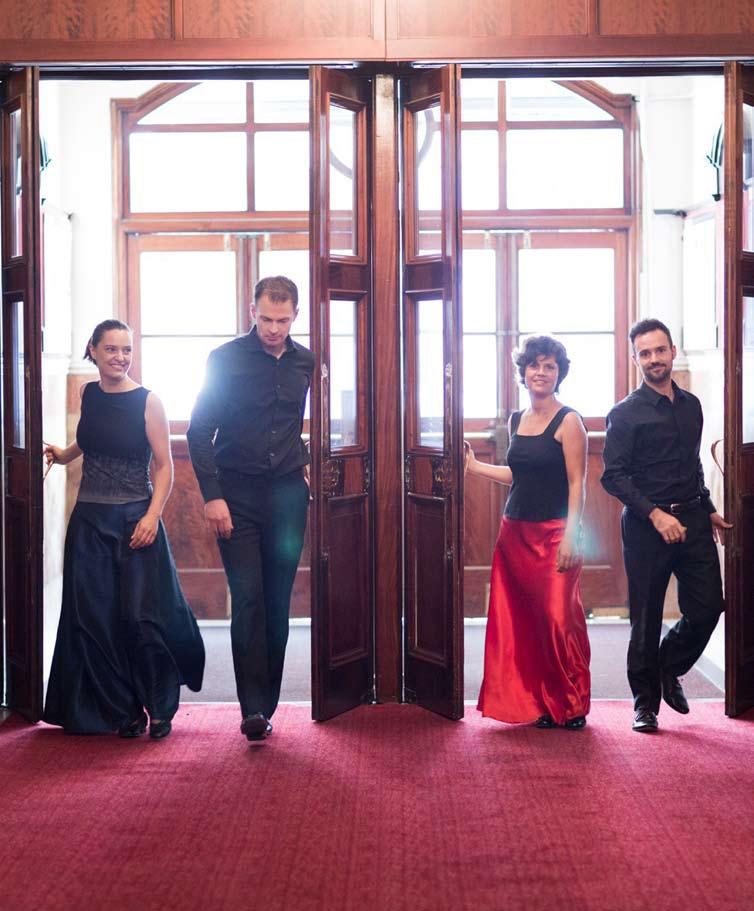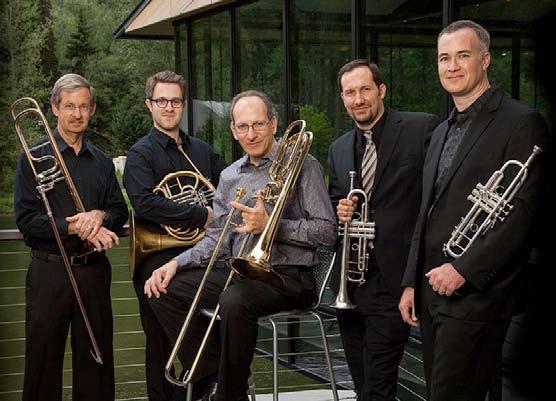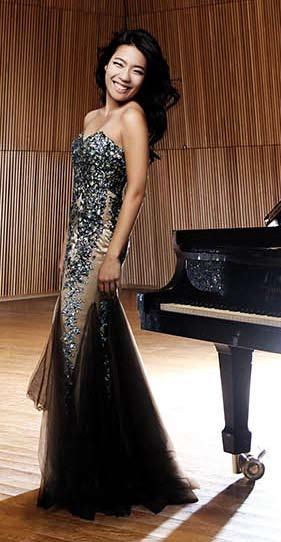
9 minute read
5. Elias Strings Sunday Nov. 1
5. Elias String Quartet
Program - Saturday,March 3,2018,8 p.m.@ Southern Theatre
The Tenth Annual Kenneth L. Coe and Jack Barrow Concert Elias String Quartet
Sara Bitlloch, violin Simone van der Giessen*, viola
Donald Grant, violin Marie Bitlloch, cello
* The Elias Quartet is grateful to welcome Simone van der Giessen as a temporary member while violist Martin Saving is recovering from an injury which prevents him from participating in the current North American tour. PROGRAM Franz Schubert (1797-1828)
Quartettsatz in C minor, D. 703 (composed 1820) Allegro assai Antonín Dvořák (1841-1904)
Quartet in E-flat major, op. 51 (B. 92; S. 62) (composed 1878-1879) Allegro ma non troppo Dumka (Elegie): Andante con moto; Vivace Romanze: Andante con moto Finale: Allegro assai INTERMISSION
Franz Schubert (1797-1828)
Quartet in D minor, D. 810 (“Death and the Maiden”) (composed 1824)
Allegro
Andante con moto
Scherzo: Allegro molto
Presto
The Elias String Quartet appears by arrangement with David Rowe Artists. www.davidroweartists.com www.eliasstringquartet.com
Special support for this concert has been provided by a generous grant from the Kenneth L. Coe and Jack Barrow Fund for Chamber Music Performance of the Columbus Foundation.
Elias String Quartet
About theArtists: EliasStringQuartet The Elias String Quartet is internationally acclaimed as one of the leading ensembles of their generation. Known for their intense and vibrant performances, the Quartet has travelled the globe collaborating with some of the finest musicians and playing in the world’s great halls. In 2015, they completed their groundbreaking Beethoven Project, performing and recording the complete string quartets of Beethoven. The cycle was broadcast by BBC Radio 3 and performed in 11 major venues in the UK. The Elias has also recorded the six-album cycle for the “Wigmore Hall Live” record label. The first album was released in January 2015. The Elias also took all-Beethoven programs to Carnegie Hall (New York) and San Francisco performances. They have documented their journey on a dedicated website supported by the Borletti-Buitoni Trust (www.thebeethovenproject.com). The Quartet was chosen to participate in BBC Radio 3’s New Generation Artists’ Scheme 2009-11 and is the recipient of a 2010 Borletti-Buitoni Award. They were awarded the 2010 BBC Music Magazine’s Newcomer of the Year Award and were nominated in 2013 and 2014 for an RPS Award and in 2014 for an Australian Art Music Award. In 2013 they were awarded a Mentoring Scholarship from the Beethoven-Haus in Bonn. They received 2nd prize and the Sidney Griller Prize at the 9th London String Quartet Competition. They have performed alongside such artists as Leon Fleisher, Michael Collins, Christian Zacharias, Pascal Moragues, Ralph Kirshbaum, Dame Anne Murray, Joan Rogers, Mark Padmore, Michel Dalberto, Peter Cropper, Malin Broman, Simon CrawfordPhilips, Piers Lane, Ettore Causa, Anthony Marwood, Huw Watkins, Roderick Williams, Allan Clayton, Melvyn Tan, and the Endellion, Vertavo, Navarra, Heath, Belcea, and Jerusalem Quartets.
The Elias are passionate about new music and have premiered pieces by Sally Beamish, Colin Matthews, Matthew Hindson, and Timo Andres. They worked with Henri Dutilleux on his string quartet “Ainsi la Nuit” and recently recorded Huw Watkin’s “In My Craft or Sullen Art ” with Mark Padmore for the NMC label.
The Quartet is steadily building a recording catalogue that has been met with widespread critical acclaim. Alongside three releases on the Wigmore Live label they have released discs of Mendelssohn and Britten. They have also released a disc of French harp music with harpist Sandrine Chatron for the French label Ambroisie, Goehr’s Piano Quintet with Daniel Becker for Meridian Records, and most recently Schumann and Dvorak Piano Quintets with Jonathan Biss. The Quartet takes their name from Mendelssohn’s oratorio, Elijah, of which Elias is the German form. They formed at the Royal Northern College of Music in Manchester where they worked closely with the late Dr. Christopher Rowland and later became Junior Fellows and Associate Quartet. They also spent a year studying at the Hochschule in Cologne with the Alban Berg String Quartet. Other mentors in the Quartet’s studies include Peter Cropper, Hugh Maguire, Gyorgy Kurtag, Gabor Takacs-Nagy, and and Rainer Schmidt. For four years they were resident string quartet at Sheffield’s “Music in the Round” as part of Ensemble 360, taking over from the Lindsay Quartet.
Elias String Quartet
Franz Schubert (born Vienna, January 31, 1797; died Vienna, November 19, 1828) Quartettsatz in C minor, D. 703 (composed 1820)
When we think of Schubert and “unfinished,” we think immediately of his “Symphony in B minor, D. 759.” Schubert, however, may actually have intended that symphony to be complete in two movements. Indisputably incomplete, though, was a string quartet he began composing and then abandoned in December 1820. It marks a new maturity in his chamber music that is usually attributed to his no longer writing for the limited abilities of the Schubert family quartet (brothers Ferdinand and Ignaz on violins, Franz on viola, and their father on cello). The “Quartettsatz in C minor, D. 703” (literally, “Quartet Movement”) is the only completed movement of the planned quartet. For a time, the manuscript was in the possession of Johannes Brahms. It was first published in 1870. A 41-bar fragment of an A-flat major slow movement (marked “Andante”) also survives; it would not be published until 1897. Dark murmurs that begin in the first violin and move fugally through the other instruments open the “Quartettsatz,” marked “Allegro assai.” After a climax, a simpler version of the same theme sounds. While the second violin and viola continue the rhythmic accompaniment of the first theme, the first violin eases into the more peaceful second theme. The two lower strings then intrude with a dramatic section in the spirit of the opening as the first violin runs repeatedly up the scales. Another more peaceful theme is heard even as the two lower strings insist on their original mission, finally but quietly overpowering all else. The brief but restless development bursts open with wild variants of the first theme. The recap revisits the themes in order except for that first one, which is saved for the coda.
-- Program notes by Jay Weitz, Senior Consulting Database Specialist for music, OCLC Online Computer Library Center, Dublin, Ohio. For over three decades, he wrote about the arts in Central Ohio for the daily papers “Columbus Citizen-Journal” and “Columbus Dispatch,” the alternative weekly papers “Columbus Guardian” and “Columbus Alive,” and Columbus public radio station WCBE-FM.
Elias String Quartet
Antonín Dvořák (born Nelahozeves, Bohemia, September 8, 1841; died Prague, May 1, 1904) Quartet in E-flat major, op. 51 (B. 92; S. 62) (composed 1878-1879)
Jean Becker, founder and first violinist of the Florentine Quartet, wanted a “Slavonic” work from Antonín Dvořák. But a B-flat major quartet that the composer began sketching out was soon abandoned in favor of this “Quartet in E-flat major, op. 51,” begun on Christmas Day 1878, and completed on March 28, 1879. Although dedicated to Becker, the quartet was not published in time for him to include it in his ensemble’s Autumn 1879 tour of Switzerland. As it happened, the Joachim Quartet performed “Opus 51” first, at violinist Joseph Joachim’s home on July 29, 1879. Becker was able to present the earliest public performances later that year in Prague. All of this occurred while Johannes Brahms and critic Eduard Hanslick were busy promoting Dvořák’s music throughout Europe. Brahms’s publisher Simrock had been skeptical at first, preferring to gauge public reaction before committing to the career of this unknown Bohemian. But when such works as the “Slavonic Rhapsodies, op. 45,” for orchestra, and the “Slavonic Dances, op. 46,” for piano duet, became runaway hits, Simrock wanted all the Dvořák it could get its hands on. This quartet, which many regard as Dvořák’s first truly mature chamber piece, was among those the publisher grabbed up. An arpeggiated main theme that ends with a distinctive rhythmic motto opens the “Allegro ma non troppo.” The polka-inspired second theme returns in the development as a contrapuntal bass line. A brief recap begins with the polka theme while the coda treats the main theme and concludes with violin arpeggios. The second movement alternates a gentle dumka with a wild furiant, both derived from the same thematic material. This material is thought to be the only surviving remnant of that abandoned B-flat major quartet. The dumka features cello pizzicati under a violin and viola dialog; the furiant is a lively Czech dance, marked “Vivace” in its first appearance and “Presto” in its second. Short and simple, the “Romanze” (marked “tranquillo”) is a monothematic nocturne. Listen for the descending viola scale that leads to the close. The “Finale” treats the Czech “leaping dance,” the skocna, in a humorous blend of sonata form with rondo touches. References back to the second movement’s dumka and the rhythmic motto of the first movement mark the climax of this spirited “Allegro assai.”
Elias String Quartet
Franz Schubert (born Vienna, January 31, 1797; died Vienna, November 19, 1828) Quartet in D minor, D. 810 (“Death and the Maiden”) (composed 1824)
Franz Schubert probably did not conceive his most renowned string quartet as a showcase for the set of variations on his 1817 song “Tod und das Mädchen, D. 531,” wherein Death comforts a young girl. Only in the imaginations of nineteenth-century commentators did the quartet’s pervasive minor quality, the second movement’s variations, and the finale’s reference to that other death-laden song “Das Erlkönig, D. 328,” blur into the morbid program that has come down to us. More likely, Schubert intended the quartet not as a meditation on death but as a vital dress rehearsal for composing the “grand symphony” to which he aspired. He had written in March 1824 to his friend and sometime librettist Josef Kupelwieser about several works -- including this “Quartet in D minor, D. 810;” the “Quartet in A minor, D. 804;” and the “Octet in F major, D. 803” -- that he considered to be preparation for his crowning symphonic opus. His earlier quartets had been family affairs, woven with the abilities and tastes of his father, his brothers, and himself in mind. But his acquaintance with the viola virtuoso Ignaz Schuppanzigh (1776-1830) around 1824 and news of Beethoven’s completion of his “Ninth Symphony” inspired him to plan a monumental work of his own. Whether this was the mysterious lost “Gastein Symphony” of 1825, the “‘Great’ C major Symphony” of 1828, or something he never lived to write at all, remains unknown.
Signs of symphonic assurance abound, however, from the quartet’s cyclic construction suffused with the opening rhythm to the orchestral texture suggested by the frequent use of multiple stops. Incredibly, Schuppanzigh disliked the work, Schubert filed it away, and it remained unpublished until 1831, three years after the composer’s death. Germinating the entire quartet is the forceful five-note descending figure that opens the “Allegro.” The movement ends with a two-part coda, the first mysterious, the second gentle. A tripartite theme (the piano prelude and the end of Death’s melody, both from the eponymous song, separated by a new section not heard in the song) and five variations constitute the “Andante con moto.” Variation one is impatient and restless; two is dominated by the singing cello; three is a duet between the first violin and the cello; four, almost the only major-mode relief in the work; and five, a great crescendo and dying away. The syncopated “Scherzo” contrasts with its tender, innocent trio section, and the “Presto” finale rushes past.







